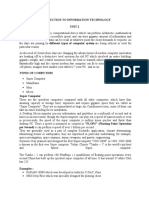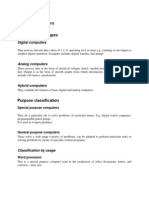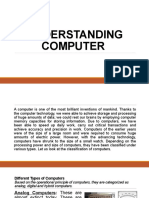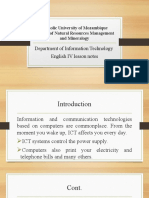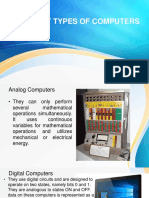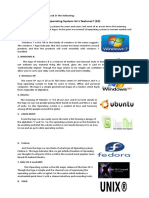0% found this document useful (0 votes)
15 views57 pagesCF Lecture - 04 Classification of Computers
The document provides a comprehensive classification of computers based on purpose, size, and working mechanism. It details general purpose and special purpose computers, along with categories such as supercomputers, mainframe computers, mini computers, and microcomputers. Additionally, it explains the differences between analog, digital, and hybrid computers, highlighting their unique characteristics and applications.
Uploaded by
YouNickMemesCopyright
© © All Rights Reserved
We take content rights seriously. If you suspect this is your content, claim it here.
Available Formats
Download as PDF, TXT or read online on Scribd
0% found this document useful (0 votes)
15 views57 pagesCF Lecture - 04 Classification of Computers
The document provides a comprehensive classification of computers based on purpose, size, and working mechanism. It details general purpose and special purpose computers, along with categories such as supercomputers, mainframe computers, mini computers, and microcomputers. Additionally, it explains the differences between analog, digital, and hybrid computers, highlighting their unique characteristics and applications.
Uploaded by
YouNickMemesCopyright
© © All Rights Reserved
We take content rights seriously. If you suspect this is your content, claim it here.
Available Formats
Download as PDF, TXT or read online on Scribd
/ 57















